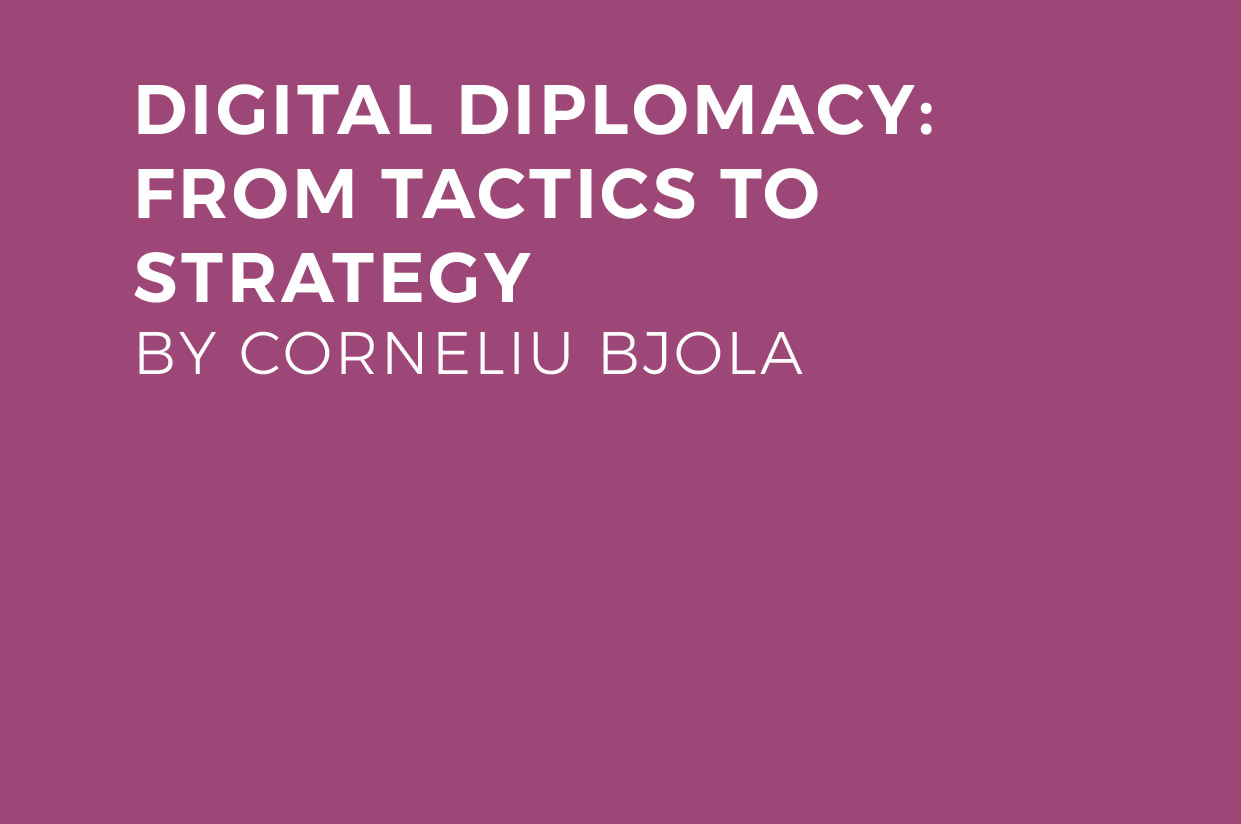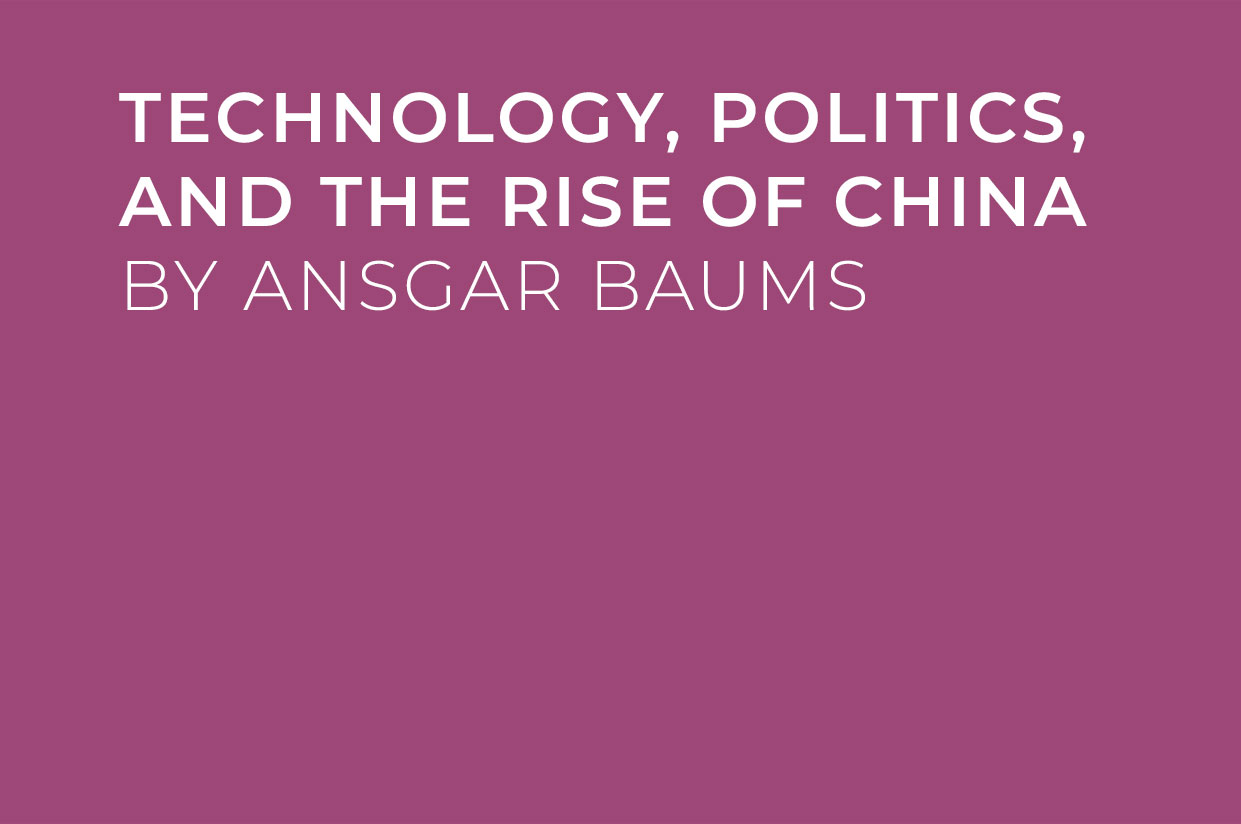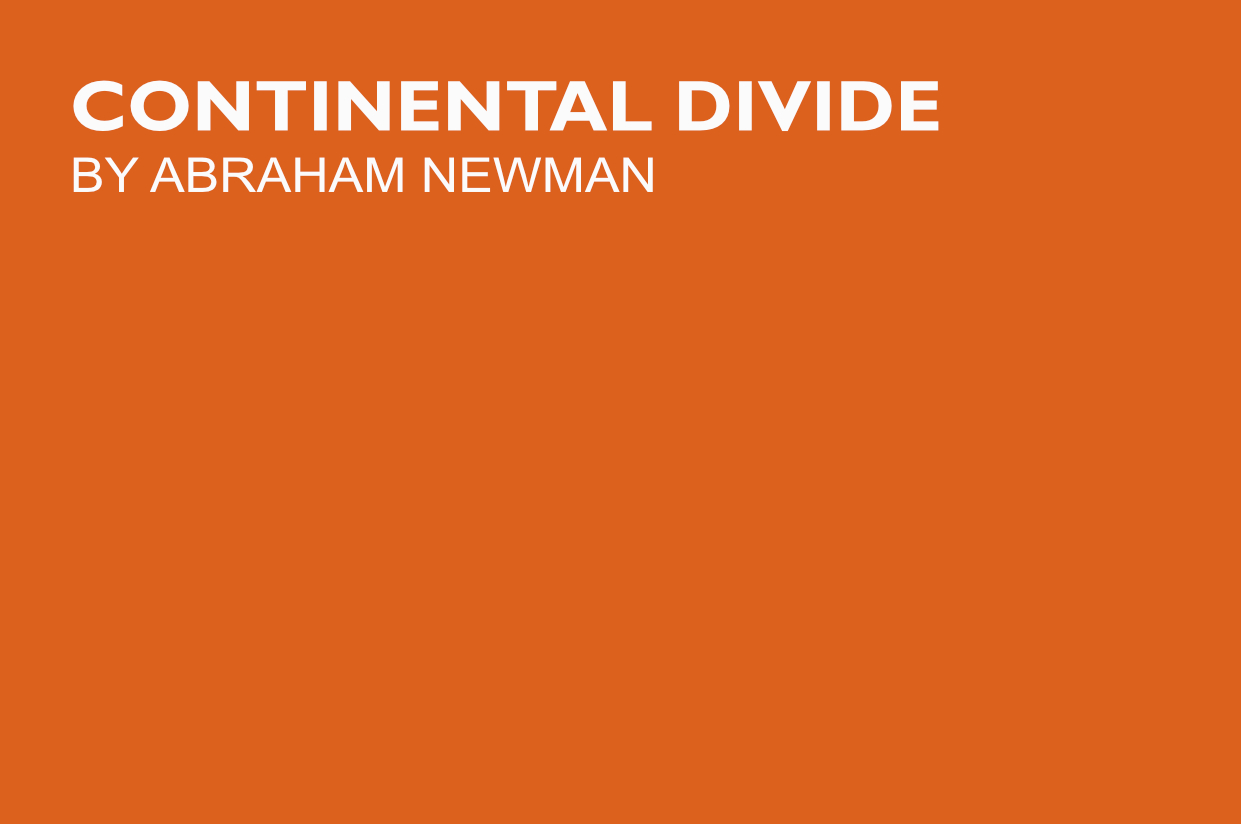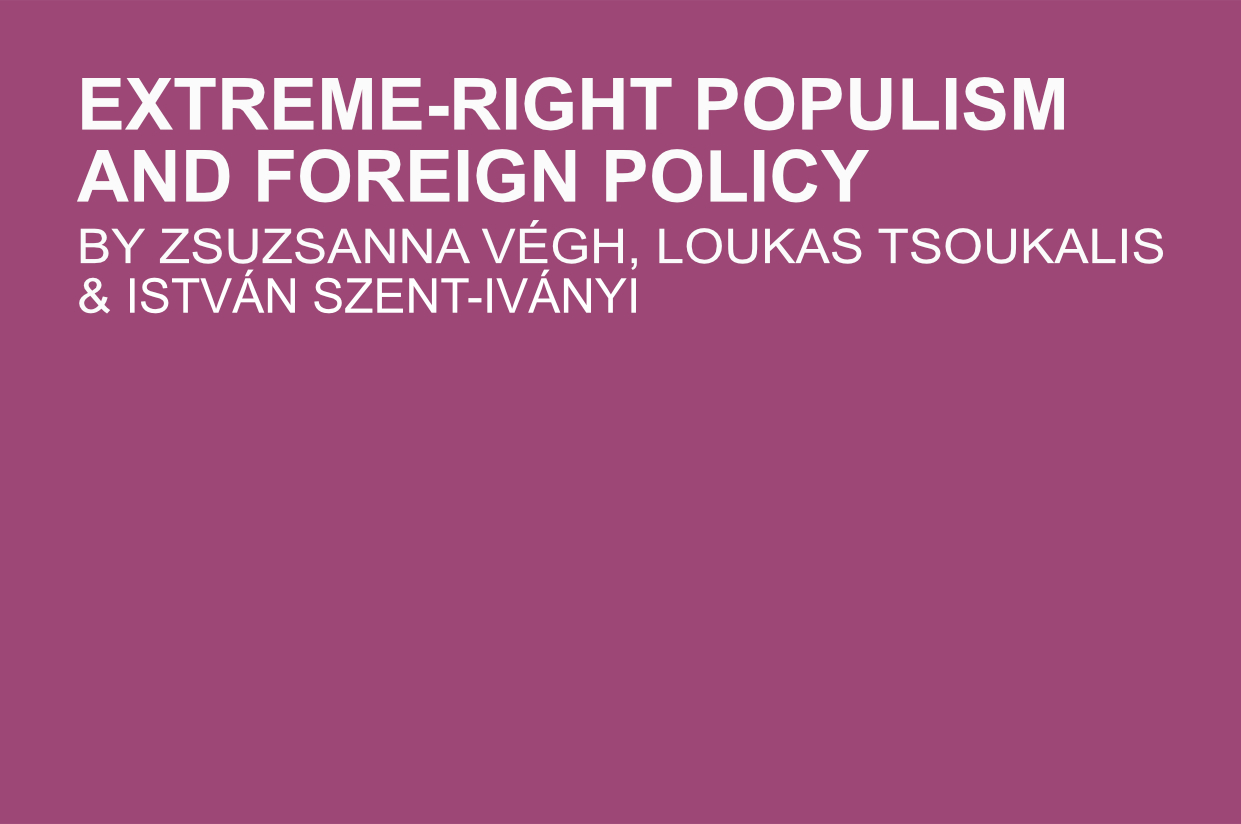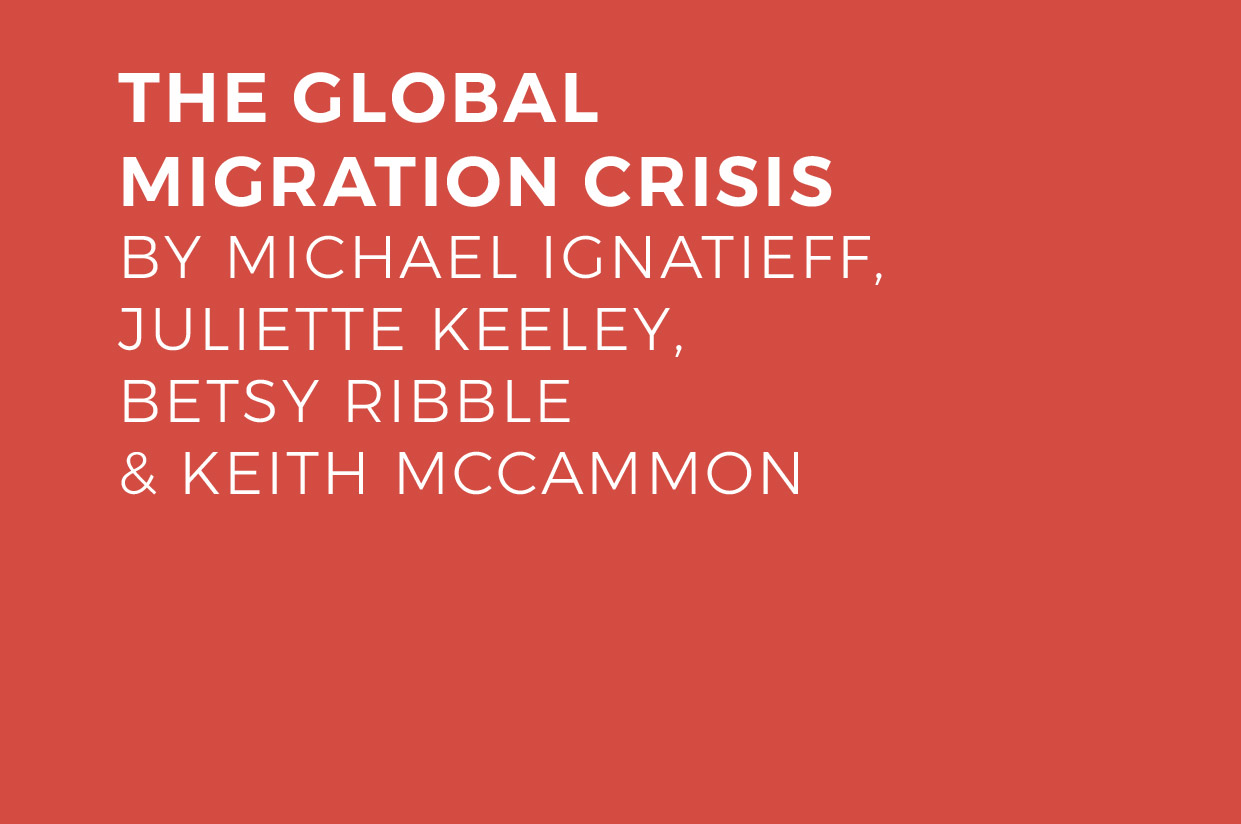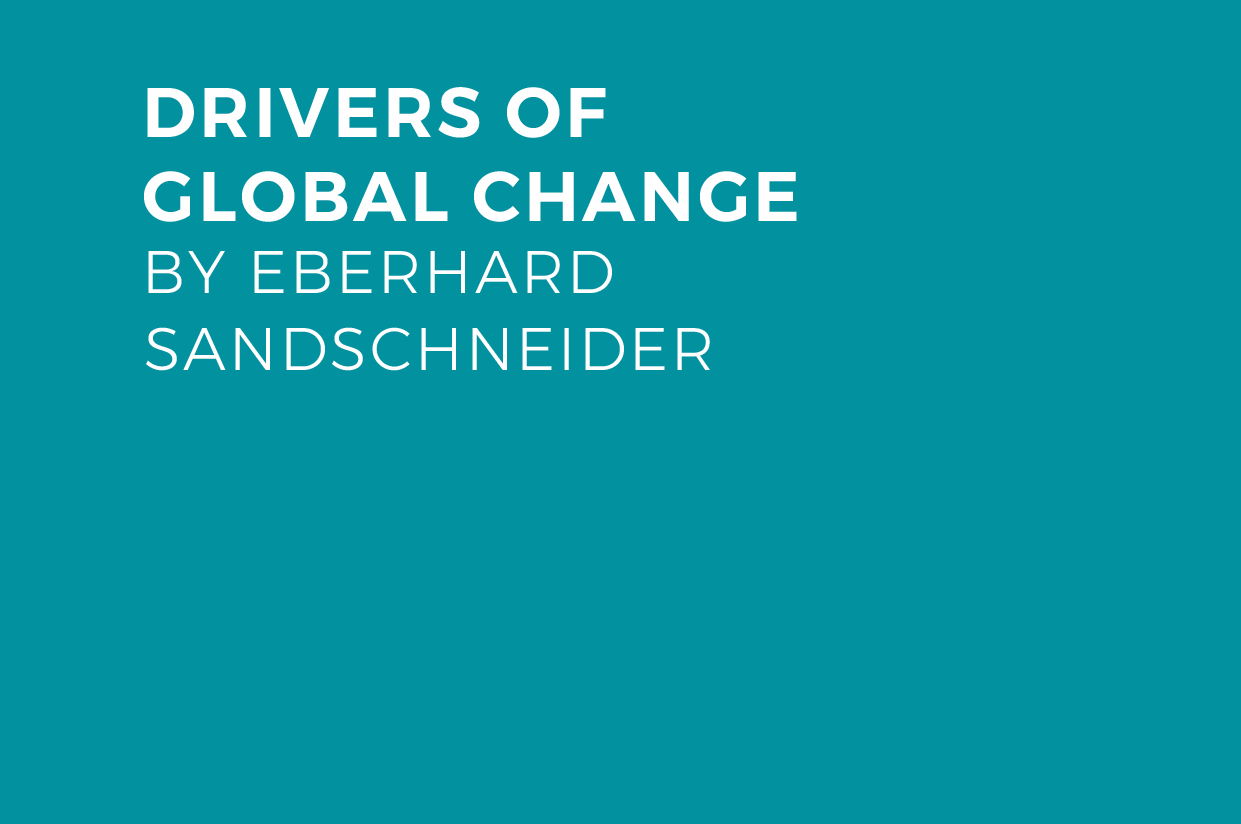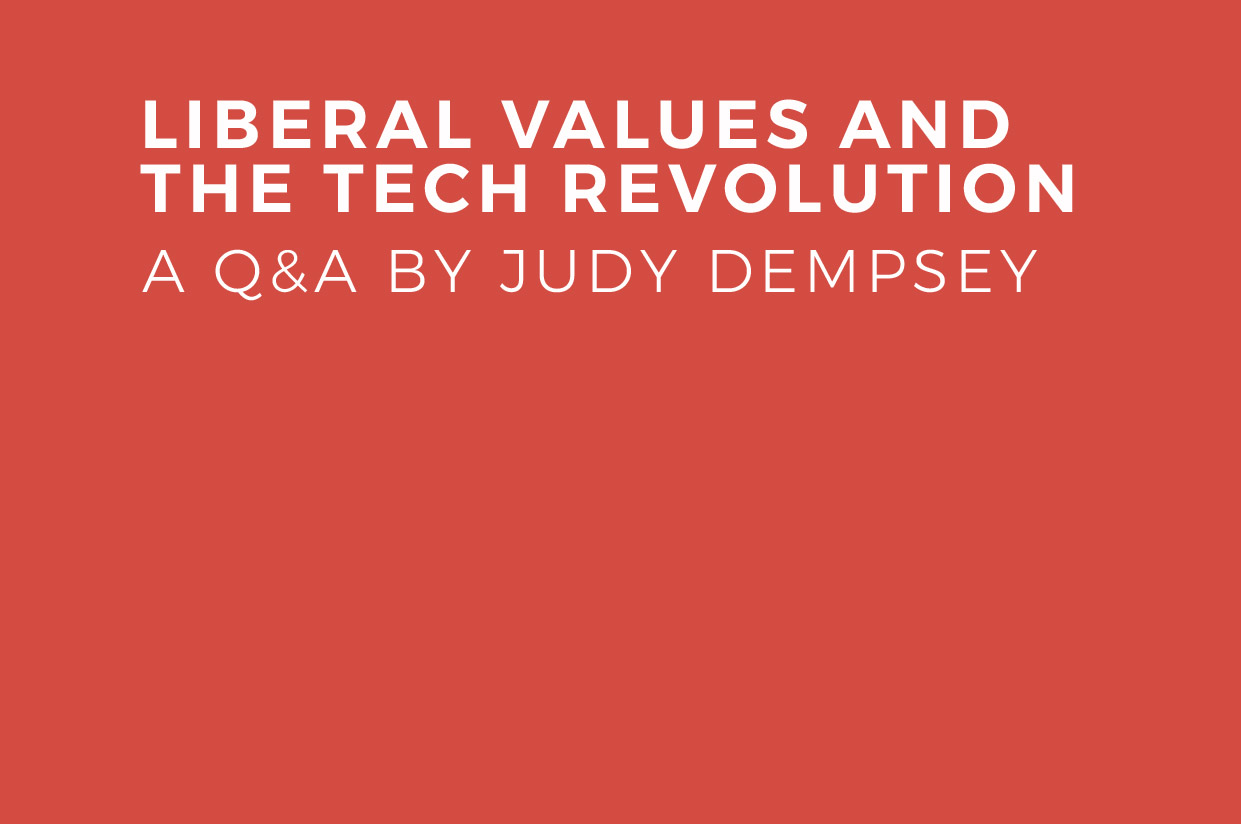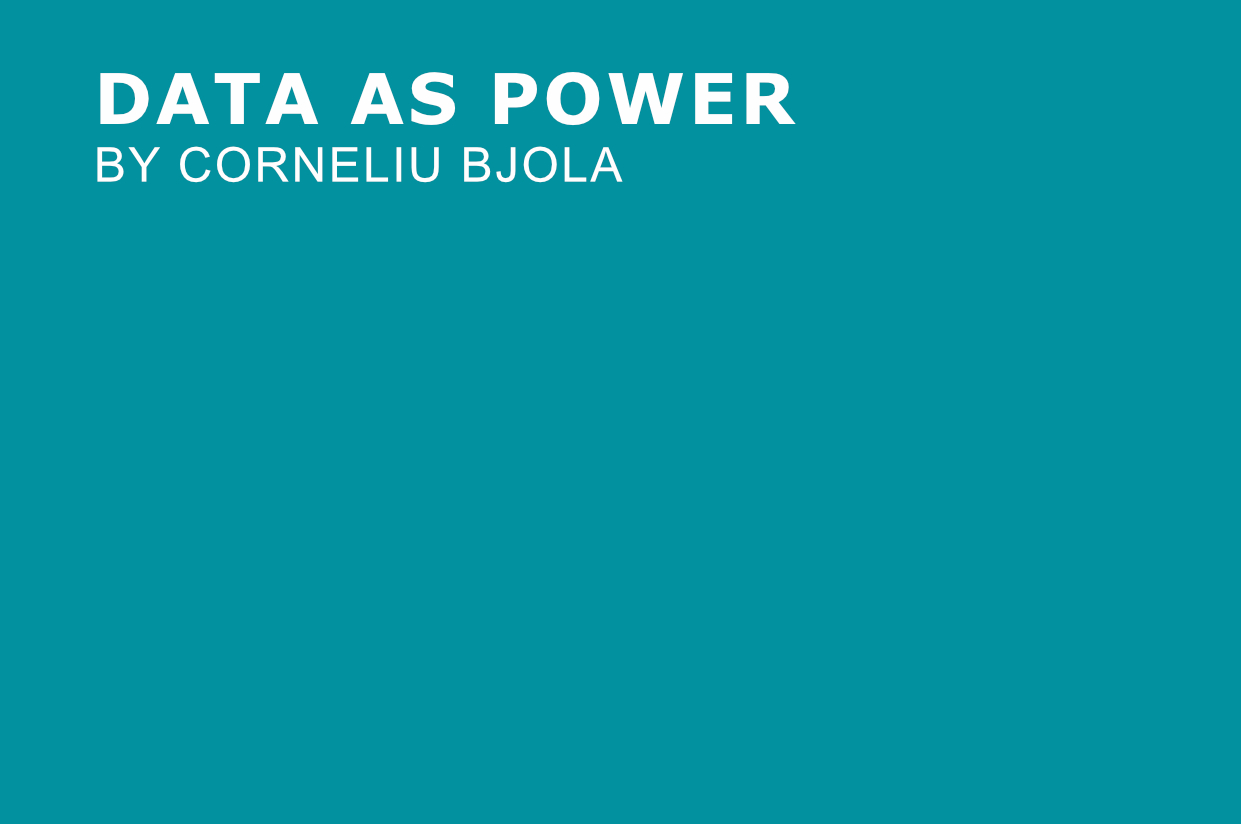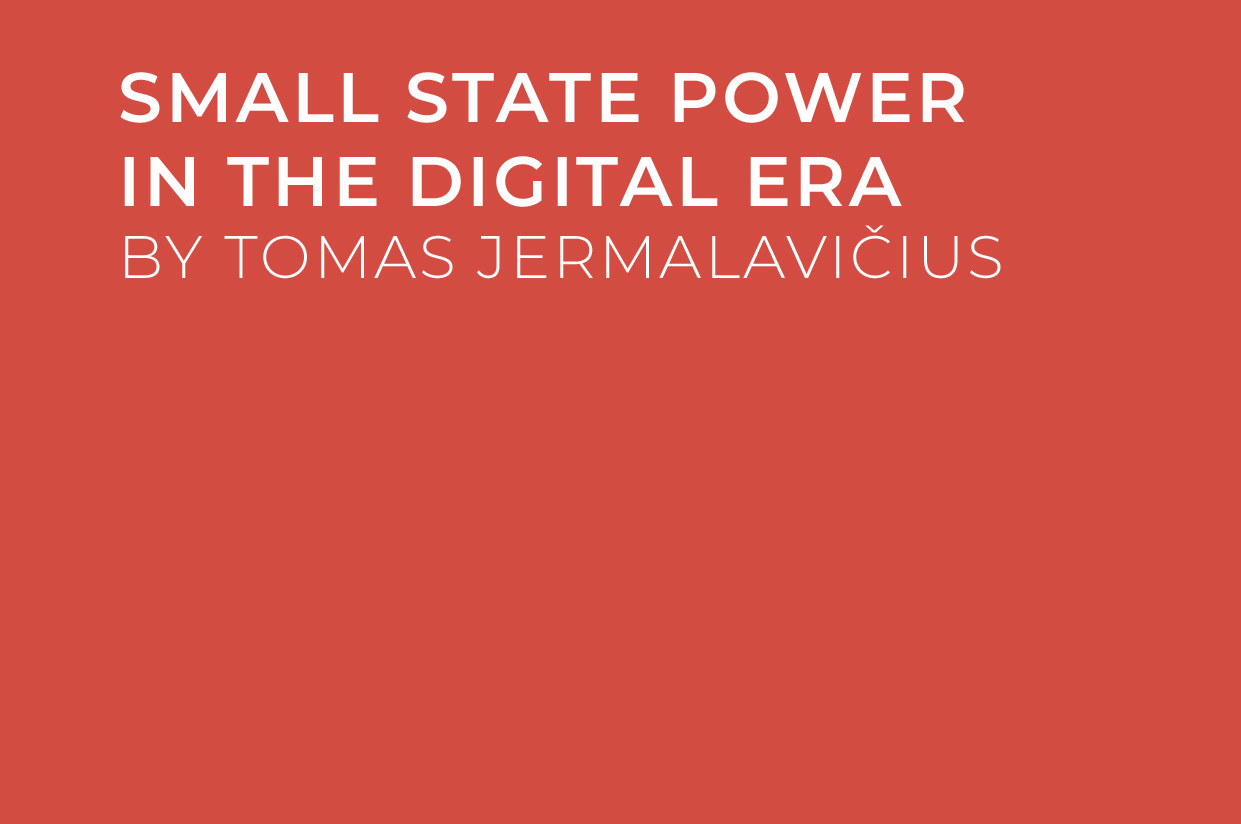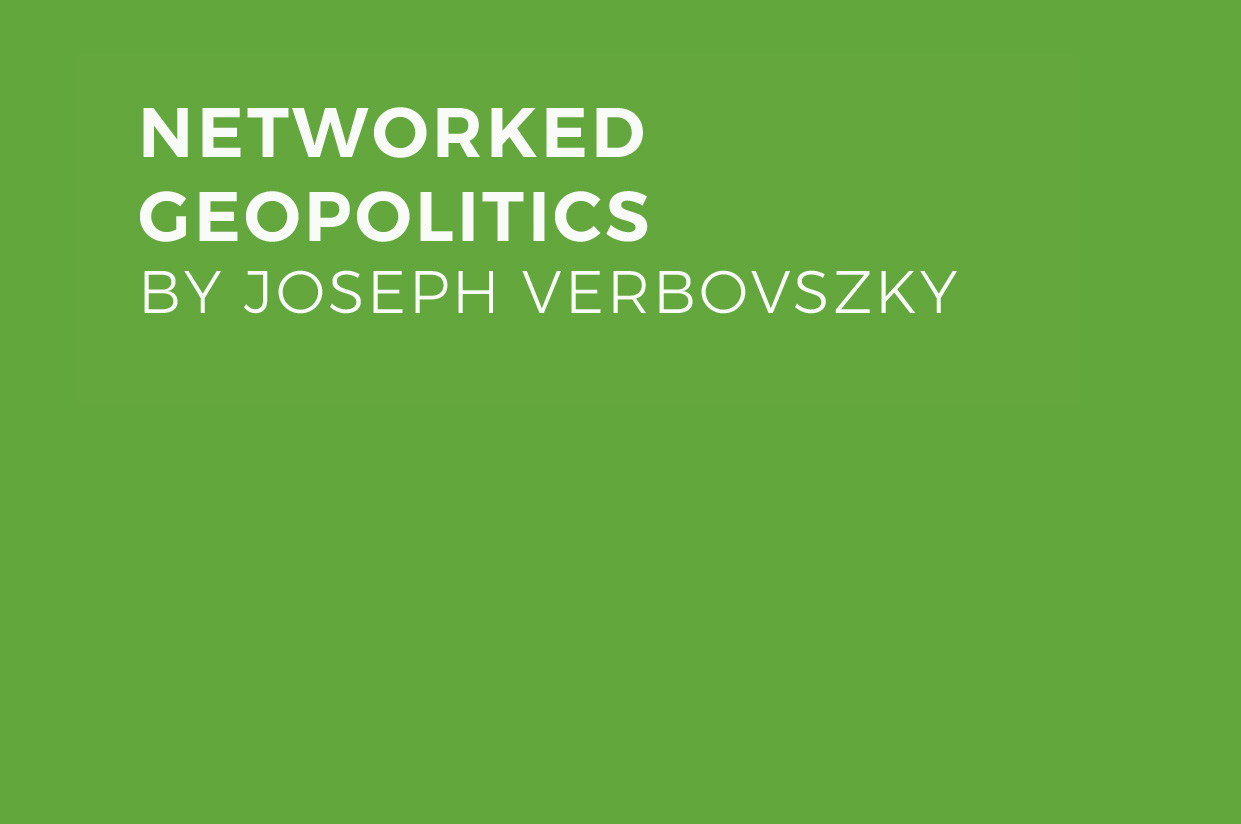
Networked Geopolitics
Global networks as both metaphor and repository of power
By Joseph Verbovszky
The world is currently in the throes of a digital revolution. This is the latest in a series of industrial revolutions that have changed, over the past two centuries, the way we think about communication, transportation, production, and commerce. As with previous revolutions, this one will be accompanied by a paradigm shift in our understanding of international politics. We are already experiencing the first effects of this shift, in the form of new, non-state actors, mass migration, and dissolving borders. How will these effects on international politics and diplomacy reshape the balance of power? Who will the main actors of the new international drama be? And what will they fight for? These are the questions this essay seeks to explore.
In no way is this essay an attempt to create a conclusive and comprehensive theory of international relations. Rather, it should be seen as an attempt to analyze changes in the international balance of power through a metaphor, taking into account the most prevalent technological metaphor of our time: the network. The goal is to use this metaphor to provide a framework and vocabulary to make sense of some of the political changes we have seen up until today, and to make assessments about their trajectories in the future. The name for this metaphorical framework will be networked geopolitics.
The geopolitical network
Metaphors are one of the best ways to understand abstract concepts, particularly in the field of political science. And few metaphors are more beloved in political science than those that come from the natural sciences. With the rise of biology, in the late nineteenth century, political philosophers began using biological metaphors such as “the body politic” to describe the organization of society as well as the interaction between states.
One of these more recent political philosophers, Michel Foucault, described the organization of society as a system of circulation.[1] Foucault was studying the development of human society from the Middle Ages to the modern era, denoting changes in its organization. What was novel about Foucault’s theory of circulation was his definition of what “circulation” meant. He refers to it as “not only the material network that allows the circulation of goods and possibly of men, but also the circulation itself, that is to say, the set of regulations, constraints, and limits, or the facilities and encouragements that will allow the circulation of men and things within the kingdom and possibly beyond its borders.”[2] The system of circulation, a reference to the state, clearly takes the human body as its metaphorical correspondent. This confines Foucault’s analysis of circulation within the borders of the [human] state.
In contrast, the theory of networked geopolitics borrows its metaphor from the most pertinent technological development of the twenty-first century, digitalization. The metaphor is the network. The network in international relations can be best understood as a kind of cross-border Data Distribution Service (DDS). Like an actual DDS, the network follows a basic subscriber/publisher model in which territorially bound “nodes” send and receive information, goods, services, money, or people across and extra-territorial network.[3] The word “networked” not only means “networked,” in the IT sense. It also describes the interconnectedness of digital and analog realities. Networked geopolitics can be considered a political application of Luciano Floridi’s “onlife” theory, in which our digitalized politics impacts our reality and vice versa, until they become inseparable from each other. The most important aspects of the network are its existence beyond territory and its ability to mix both analog (real life) and digital realities. These two factors have a decisive impact on the definition of territory within the network.
Territory in the network
The territory of the geopolitical network is both analog and digital. It consists of six types of flows that cross international state borders and the physical nodes, from which these flows are sent and received, which are bound within state borders. The six types of flows are identified as:
- Trade flows refer to the transfer of goods across global supply chains.
- Financial flows refer to the global system of currency exchanges and international banking as well as cryptocurrency networks.
- Migration flows refers to the movement of people.
- Energy flows refer to system of international energy resources.
- The flow of violence refers to movement of weapons and fighters across borders. This also includes attacks of various kinds, including physical or cyber.
- The flow of information refers to the widespread use of the internet, mobile technology, and the infrastructure supporting its widespread access.
The first five flows are not new. In fact, they could easily be described by Foucault’s circulation model. The sixth flow, however, the flow of information, is where the novelty lies.
The flow of information in its current form is a unique product of digitalization. Prior to the digital era, the flow of information existed, but digitalization has affected two key features of it that have had tremendous repercussions across the network. First, digitalization has dramatically increased the speed of information, which will be designated as the communication rate. This refers to how quickly information can be communicated across the network. Secondly, digitalization has greatly expanded the logistical capability of the flow of information, designated as data capacity. This refers to the size of information that can be transmitted across the network. The combination of these two factors and its subsequent effect on the flow of information can be designated as acceleration.
The overall acceleration of information has a tremendous effect on power relations within the network. Increases in the communication rate and data capacity, such as those we have witnessed in the past twenty years, with the leap from dial-up to 4/5G, enable a rapid decentralization of power. If knowledge is power, and this power is held within data, then the control of this power no longer resides exclusively in the central administrative structures of the state. It is now redistributed across sub-state actors and even individuals in the network.
For example, identity information (address, birth certificates, passports, driver’s licenses) can now be uploaded and verified independent of the state. Furthermore, verified documents may be used repeatedly across multiple platforms after initial verification. For example, Facebook provides a treasure trove of identity information that gives a much more accurate picture of an individual than many government databases. All of this information exists outside state control.
Another example is the media. Twitter, Youtube, and Facebook have now enabled an upload and dissemination system that is an exponentially faster than traditional media outlets. Where it might take a few hours to a day for a qualitative article about a newsworthy occurrence to appear on traditional media, it will be virally reported and retweeted across Twitter in a matter of seconds. This makes the dissemination of information, both true and false, exponentially easier, and control over it that much harder.
The most important feature of the acceleration of information is that it accelerates all other flows. This universal acceleration is heavily influenced by data capacity that allows automation of critical functions in other flows. Automated warehousing, shipping, and delivery go hand in hand with the digitalization of sales and purchases. Likewise, the digitalization of financial markets allows for rapid and automated transactions. It also bears responsibility for the appearance of digital currencies that can be bought and sold via apps.
In the realm of migration flows, digitalization has also played a significant role. The ability to organize and mobilize large groups of people has been radically simplified. The clearest example of this is the Arab Spring, in which the viral spread of a self-immolated fruit seller toppled most of the authoritarian governments of the Middle East, considered at the time to be some of the most stable in the world.
The flows within the network are the new territories, control of which would tip the balance of power. However, since they are not physical, they cannot be “controlled” but rather influenced. Influence here refers to the ability to strengthen or weaken flows. In order to influence one of the flows, one must control the parts of them still connected to physical territory. These places are called nodes.
Nodes are areas within the network where flows are concentrated and redistributed. They are linked to urban centers and follow the DDS principle of subscriber/publisher. This means they are both able to send and receive flows. Control over nodes allows for influence over the network flows. Having nodes that are vital for different flows within a given state gives that state influence over multiple flows.
In addition to control over the physical territory through which network flows must pass, actors may be able influence flows through the use of gates. Gates are the means of regulation for the network flows. These gates can be physical, legal, technical, or political. They can be conceived of as chokepoints through which actors in the network can leverage influence over the network flows.
A good example is the visa mechanism attached to the Ukrainian entry into the Schengen Agreement. It functions as a legal gate to control not only how many people come in but also for how long and for what purpose. In contrast, the gate to control the influx of refugees into Germany is not only legal but also political and physical. It involves the physical barriers of fences in Hungary and the Balkans, the Mediterranean Sea, the political agreements with Turkey and North African countries to keep the refugees in their countries, and a complex legal process regulating entry. Other examples include European legal mechanisms to control the Nordstream 2 project, and China’s “Great Firewall,” to control access to the flow of information.
Actors in networked geopolitics
The main actors within the geopolitical network are still states. But the decentralization of power, brought by the acceleration of the flow of information, results in the rise of new actors. Therefore, the actors have been split into two main groups: “old” and “new.” Old actors include states and these have been further broken down into those that wield considerable leverage over the network, i.e. “The Strategic Triangle” and those seeking to leverage their way into a more favorable position, i.e. “Strategic Disruptors.” New actors are defined as digital militants or strategic citizens.
The Strategic Triangle
The majority of actors in networked geopolitics are states. However, not all states have the same leverage over the flows of the network. The Strategic Triangle is defined as the three states that have the largest concentration of nodes in their territory, and which therefore have the greatest leverage over the network flows. These states are the United States, China, and Germany.
It may not be surprising that the US and China are two of the strongest actors in the network. All of the largest digital giants are located either in the US or in China.[5] Furthermore, one of the defining features of the US strong position within the network is its transatlantic relationship, which deeply integrated it economically with Europe. Meanwhile, China has successfully developed itself from being an initial strategic disruptor into the world’s largest logistics hub, a vital supplier for many key Western technologies, including rare-earth components for smart-phone technology. China’s One Belt, One Road policy is likely to further enhance this position.
But, why Germany? Why is one of the least digitalized countries, embedded in the bureaucratic superstructure of the EU, considered one of the main players of the geopolitical network? Because Germany is the crossroads of digitalization. It is a country that possesses no inherent digital technology giants of its own. What it does possess is a number of vital nodes for distribution across Europe and the world. Both the ECB and the Bundesbank are located in Frankfurt, some of the largest ports are located in Hamburg and Bremerhaven. Germany’s Autobahn and railway systems make it an important transport hub between East and West. It is one of the landing ports for Russian gas before it is redistributed. Furthermore, Germany’s federal structure may be better suited for the decentralized distribution of power within the network than the macrophagic Paris. The EU, despite its own claims to sovereignty has functioned more as a regulatory gate for Germany to distribute network flows throughout Europe with greater ease, and tap into the nodes of other countries in Europe without having to physically control their territory. Therefore, the EU functions as a power projector for Germany, without becoming a great power itself.
Strategic Disruptors
Strategic disruptors are states that exist outside or on the borders of the global network. These actors wish to arrange a leveraged buy-in. They wish to regain influence of the network flows on their own terms, in opposition to members of the Strategic Triangle. These actors use disruptive technology to bypass gates to the network. Inadvertently they assist in the process of digitalization.
Russia, for example, successfully leveraged its way into the Western information network by utilizing digital technology at a time when US mainstream media dominated airtime on television and radio. By the time of the 2016 American presidential election, Russian-influenced media had attained a position in the global information network that easily rivaled that of its mainstream competitors. Russia is further attempting to leverage its control the flow of energy in Europe by building Nordstream 2. Through its influence of the energy supply into Germany through Nordstream, Russia could not only influence Germany but also the entire supply chain dependent on Germany’s redistribution.
China is a good example of a strategic disruptor that rejoined the network. China went from international pariah in the 1970s to the number one manufacturer for both US and Europe. The Chinese maintain strong financial leverage over the US through their purchase of US debt in the form of dollar reserves. Meanwhile, China influences the flow of information in China through its Great Firewall. China’s successful strategy has changed it from a strategic disruptor to a member of the Strategic Triangle.
Digital Militants
The side effect of the decentralization of power in the digital era is the democratization of violence. A result of this democratization is the rise of Digital Militants. These are non-state actors that can use the network flows for disruptive purposes. The best example of digital militancy is the Islamic State. It is the first completely digital army. Using mobile networks to recruit, organize attacks, and disseminate propaganda, this band of rag-tag religious fanatics, with an ideology fit to the Middle Ages, was able to surprise and overcome the far more well-equipped armies of Iraq and Syria.
Strategic Citizens
Taken partially from the concept of “Three Block War,” the strategic citizen refers to all individuals who can have a strategic impact on international relations through the use of the flow of information. This can include anyone from individual hackers launching cyber attacks or activists who film protests. The fruit seller who immolated himself in Tunisia and ignited the Arab Spring is an excellent example.
The new balance of power
How does the network affect the balance of power? First, the network amends the traditional definition of territory. The network flows are the new territories of networked geopolitics. Due to their dynamic nature, they cannot be controlled, only influenced. In order to influence the flows, one must control or have leverage over their nodes, which are still connected to physical territory. One result of this is that the territory on which the nodes are located gains in geopolitical relevance while territory without a strong connection to the flows loses significance.
Secondly, the network affects the goals of the actors. States achieve power in the network by creating and maintaining political dependencies. These dependencies can be created by influencing network flows to make the recipient actor more dependent upon the source of the flow. Moreover, the network enables power projection through the supply chain i.e. it is possible for one actor to leverage a flow to not only influence the initial recipient but also the second and possibly third recipient as well.
In contrast, digital militants and strategic citizens do not achieve power, they achieve change by disrupting the network. By harnessing network flows, these actors can magnify their importance. Due to their small size and the speed at which they can move through the network, digital militants and strategic citizens present a major challenge for state actors in the network. Preventative action is nearly impossible, while the potential for disruption is grows.
How is conflict likely to occur in the network? Conflict is likely to occur in two forms within the network. There first involves conflict between states. This involves leveraging the influence of flows to coerce behavior. One favored method is exclusion. This can be seen in the sanctions policies of the EU and USA against Iran and Russia. These strategic disruptors, however, attempt to leverage their way back into the strategic triangle by instrumentalizing their own influence over network flows or by creating alternative paths for the flows i.e. Russia’s information and energy strategy. There is also an incentive for all actors within the network to increase the flows amongst each other due to the wealth generated by increased connectivity. This also raises the price of potential exclusion for noncompliance. This creates the dilemma that no state actor within the network wants to reduce network flows, since it removes dependencies resulting from interconnectivity.
This second potential for conflict involves digital militants. These conflicts are more likely to be violent. As the network flows concentrate more of the world’s vital resources within themselves, the more disenfranchised groups will seek to disrupt them. As a result, most armed conflicts are likely to be of low-intensity nature, with irregular groups trying to disrupt the network flows. The effectiveness of these groups depends very much on the nature of the network itself. Due to the speed of the flows, these actors can inflict disproportionate damage on critical infrastructure. As the network flows continue to increase in speed, these type of digital militants are likely to become more of a threat.
The main result of the network on geopolitics will be the redefinition of the game between great powers. State actors have a common goal to continue building the network, both to grow wealth, as well as to increase each other’s’ dependency. Exclusion through sanctions is likely to lead strategic disruptors to build additional flows to leverage their way back in, thus resulting in new and strengthened network flows. Digital militants and strategic citizens will create more disruption as network speed increases and wealth concentrates itself among the largest nodes. Thus, the new game will likely be one of dynamic inclusion and exclusion, of continuity and disruption.
Joseph Verbovszky is a strategic analyst for RUAG Schweiz AG, specializing in analysis of future threats and procurment trends. He is also writing his PhD at the University of the Bundeswehr in Munich on the implications of cultural and political structures on German defence Policy. He currently holds a MA in International Relations and Economics from Johns Hopkins School of Advanced International Studies (SAIS) as well as a MA in History and a BA in Policitcal Science from Case Western Reserve University.
[1] Michel Foucault, Security, Territory, Population: Lectures at the Colléege de France, 1977-1978 (Picador, 2007), 325.
[2] Ibid.
[3] Ironically, the DDS takes its subscriber/publisher model metaphorically from a different domain: printing.
[4] Apple, Alphabet, Amazon, Facebook, and Microsoft in the US and Alibaba, Baidu and Tencent in China. Ben Scott, Stefan Heumann, and Philippe Lorenz, “Artificial Intelligence and Foreign Policy,” Stiftung Neue Verantwortung, January 2018, 15.


